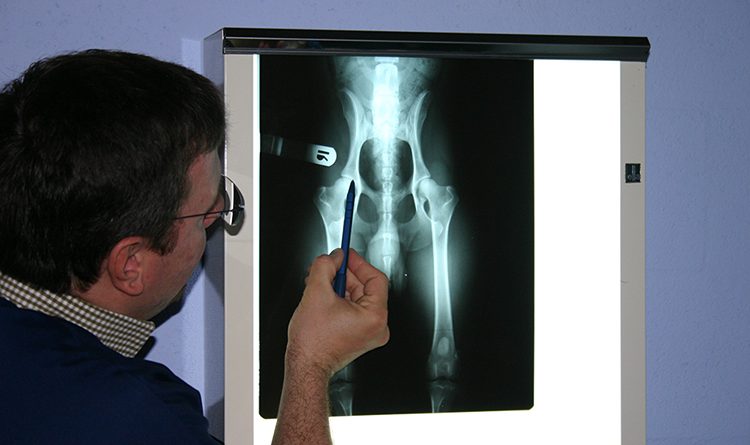Symptoms of Hip Dysplasia in Dogs
Abnormal hips cause an abnormal gait so that dogs with hip dysplasia often “bunny hop” or use both back legs simultaneously to hop when they run. Canine hip dysplasia symptoms can include difficulty getting up from a sitting position, climbing stairs, and squatting to urinate or defecate. Dogs with hip dysplasia tend to have a narrow stance, that is, stand with their back legs close together.
Some dogs actually have mildly dysplastic hips when they’re young (noted on X-ray), but won’t have canine hip dysplasia symptoms until they’re older. Older dogs tend to have less muscle mass to hold their bones correctly, so that’s when dysplasia is obvious, even though it existed for several years. Dogs with severe hip dysplasia have obvious problems when they’re young.
Your veterinarian can diagnose hip dysplasia in your dog with a physical exam for increased joint laxity, limited range of motion, creaking, and wasting (atrophy) of the thigh muscles. Your veterinarian will also take X-rays to diagnose canine hip dysplasia. Because some dogs have radiographic evidence of disease but no symptoms, and other dogs have no radiographic evidence of disease but have symptoms, the diagnosis is often made based on the physical exam and your dog’s symptoms.
- Difficulty rising
- Waddling gait
- Back legs kept close together
- Short stride
- Shifting weight from one leg to another when standing
- Bunny hopping
- Falling over when squatting to urinate or defecate
- Thigh muscle wasting
Hip dysplasia and shoulder arthritis in dogs
Dogs with canine hip dysplasia are also more likely to have shoulder arthritis. Dogs with painful hips throw their weight forward onto their shoulders. This stress induces arthritis of the shoulder.
How are dogs diagnosed with hip dysplasia?
Hip dysplasia in dogs is diagnosed with X-rays. Because your dog must rest perfectly still for these X-rays, he or she will be anesthetized.
Your veterinarian can diagnose canine hip dysplasia based on the X-rays, but only a certified radiologist can fill out forms that declare your dog is free of hip dysplasia. These radiologists work with the Orthopedic Foundation for Animals (OFA) or the University of Pennsylvania Hip Improvement Plan (Penn HIP).
Which tests are used to diagnose hip dysplasia in dogs?
X-rays are used to diagnose canine hip dysplasia.
Source WebMD

